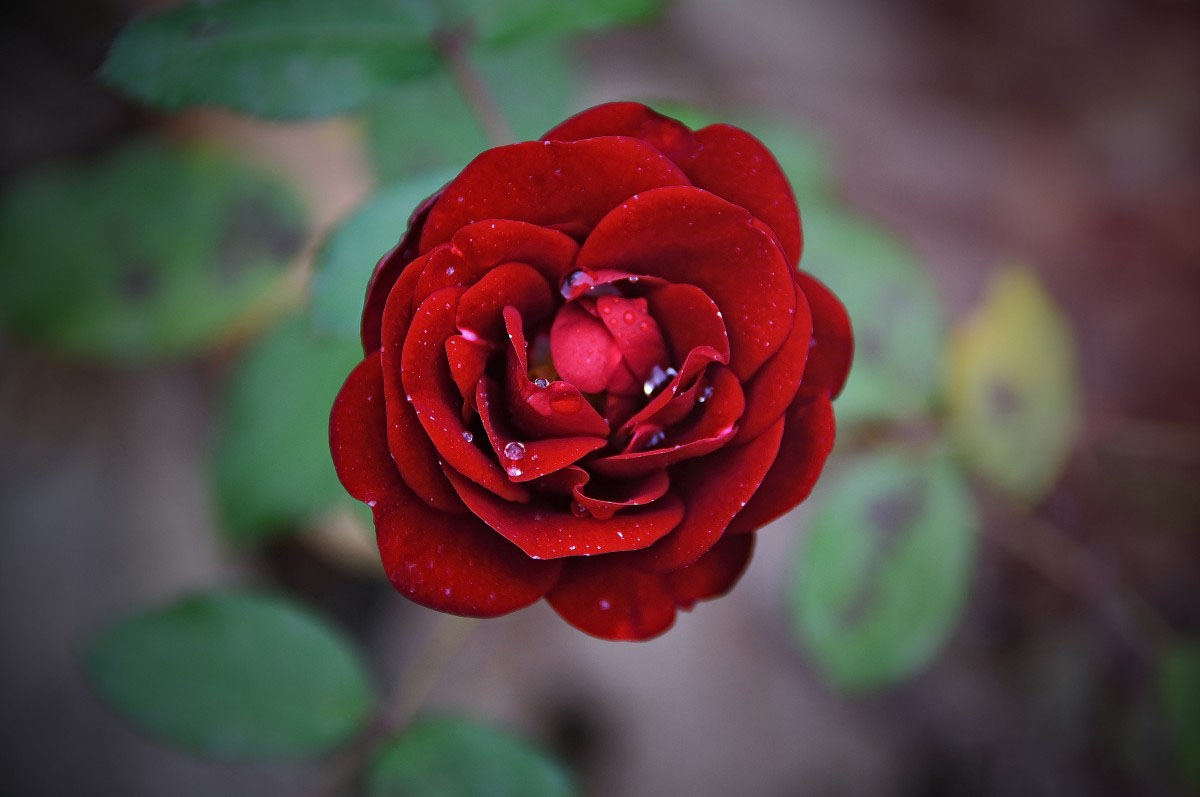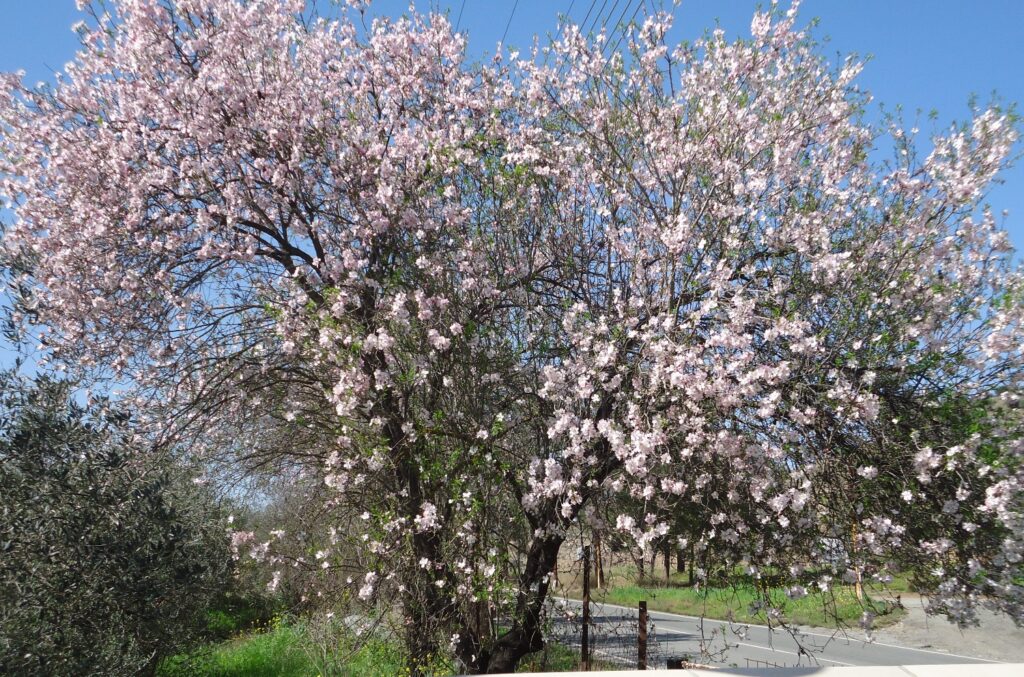By Patricia Jordan
February already and what lot of rain we have had since the start of the year! It’s all good for the dams, aquifers and wells, but delays the planting of seeds and new plants until the soil has dried somewhat!
An abundance of rain-swelled lemons on your citrus will be useful when Pancake Tuesday comes along on March 1 and you may even like to squeeze the juice from your oranges onto your pancakes as well and make them truly St Clements’ pancakes!
Before then however St Valentines’ Day looms large this month when florists and garden centres will be full of red roses for you to buy to express your love for that special person in your life. So big is the market for red roses nowadays that they are often flown in from developing countries like Ecuador (now the biggest producer of them), as well Columbia and Kenya, where they are grown around Nairobi and the Aberdare Mountains.
Many flowers have hidden meanings and the red rose is for romance, love, beauty and perfection, while a thorn-less red rose means ‘love at first sight’. The best ever red rose is thought to be Crimson Glory from famous French rose growers Meilland and if you are able to buy one, then they like to grown in full sun in well-drained soil. There are many others, D’Arcy, Mr Lincoln and Ingrid Bergman among them. How lovely to have a rose named after you.
The roses that we know today evolved from the Apothecary rose, Rosa gallica, known as the best old Damask rose. Rosa gallica was one of the first species of rose to be cultivated in central Europe and is a parent of several important rose cultivars. We all know that the area around Agros is famous for its highly scented Damascena roses, rose water and wine.
WHAT TO DO IN THE GARDEN THIS MONTH
With all the rain we have had this winter so far outdoor potted plants might be sitting in saucers full of rainwater, so check them and drain them if necessary. Many plants die because their roots are too wet, succumbing to root rot. Being awash with rainwater isn’t always sufficient sustenance for them and they may need a quick burst of liquid fertiliser now and again.
It’s time to feed any fruit and nut trees with a high nitrogen fertiliser. Nitrogen is necessary for stem and leaf growth, so apply 900g to adult trees and 300g to young trees. My under gardener uses an old mug for this purpose – three for mature trees and one for young trees, a much easier way than trying to measure it on the kitchen scales! There is also some pruning to be done now. Many citrus trees will still have fruit on them, so leave those branches for now and return to them once the fruit has been picked. The main aim of pruning is to keep the trees to a manageable height for fruit picking. It’s also important to have a good circulation of air in the centre of the tree to avoid any fungal diseases, so take off any dead, diseased or crossing branches. You may have pruned your olives and grapevines already. New vines can be started off from strong cuttings, by placing them in the earth at this time and leaving them until they show signs of life. This might take a while though, but such fun to grow your own!
A good sign that spring is on its way is almond blossom, which is out now in more sheltered places. However, the wonderful flower displays can be very short-lived here and there may not be many bees around to pollinate the flowers during this wet winter.
Although the soil is still quite cold, you can prepare to move shrubs and trees and plant new ones. With a newly bought tree or shrub check that the roots are not entangled and growing in a circle in the pot as that usually means that the plant has been in the pot far too long! Add some slow-release fertiliser to the bottom of the planting hole and fill in the sides with some fresh compost, making sure that the plant is upright. Large trees may need a stake, so it is best to put this in first or you may drive it through the root ball causing damage to the roots. Do not plant trees or shrubs near cupressus hedges, but leave a gap of 3 metres from them as cupressus are greedy feeders and will remove all the goodness roundabout. Remember to leave some space for sideways growth.
Other pruning jobs this month should include Jasminum officinale, the summer flowering sweetly-scented white jasmine. There may be lots of growth still on the plant, but there will be no flowers later on unless you take this action. This jasmine needs to be cut right back to the wood as the flowers appear on the ends of fresh new stems. Give this climber a feed after this job. Jasminum mesnyi, the winter-flowering jasmine is coming into flower now and what a joy to see the double bright-yellow flowers, however this jasmine is pruned after flowering Prepare yourselves for pruning bougainvilleas, as they can be vicious and bite back, so protect your eyes and bare flesh from their nasty thorns. Some say that wisteria needs to be pruned twice a year, but I have not found that to be the case. I do remove any seed pods, as it will take at least seven years before the newly germinated plant produces any flowers. I just cut back any late weak stems and once the leaves are off remove any apparent dead wood. If you are thinking of buying a wisteria choose one that has furry buds showing already so that you know that it has reached the flowering stage. Although many lavender plants may be still in flower, especially Lavender multifidia with its lacy grey leaves, along with rosemary, they can be very woody if left to grow without attention and in the case of rosemary, the branches can open up, looking very unattractive.
Back to roses again, check the roots are still firmly in the ground and prune the stems with a slanted cut above an outward facing bud so that you don’t get any inward growth and then give them a feed with a rose fertiliser. I am always being asked how and when Banksia roses should be pruned. They tend to sprawl, but are so charming. The largest ever Banksia Rose alive today was planted in 1885 in Tombstone, Arizona. The tree officially covers about 840 square metres, and its gnarled trunk is about 3½ metres around. Mine, planted here about 20 years ago, grows along the fence line in rather poor soil and with only a little feeding in the early spring. I only remove any obvious dead wood.
PLANT OF THE MONTH
Iris albicans
Iris albicans, sometimes known as the Cemetery Iris or White Flag Iris, is one of the first irises to flower in spring time here. Originally from Yemen and Saudi Arabia, they are now readily available here. They have a long history and have been in existence since about 1400BC when mention was first made of them. The plants are known to have been planted around Muslim graves.
The lance-shaped leaves grow in a fan shape and can reach between 30 and 60cm, which is much less than the other favourite iris, Iris germanica. They look attractive in large clumps and require very little attention, other than some rose fertiliser a couple of times a year. It is good to split them up after flowering every several years and replant them in a sunny position with the top of the rhizome exposed to the sun.
The attractive flowers with white falls and standards and yellow beards are slightly fragrant and appear from late February onwards, but like most irises the flowers last only for a couple of days or so. They prefer to grow in full sun and are particularly drought tolerant, lasting for years. Snails may be a problem as well as red Dionconotus neglectus beetles which may eat through the flower stems and leaves, so watch out for them. Propagation is by division, as the flowers are sterile and do not make seeds.









Click here to change your cookie preferences